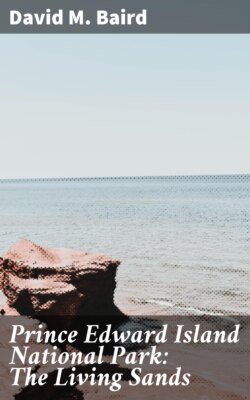Читать книгу Prince Edward Island National Park: The Living Sands - David M. Baird - Страница 4
На сайте Литреса книга снята с продажи.
THE GLACIATION
ОглавлениеTable of Contents
All of Canada and much of the northern United States was covered by a vast ice-cap in geologically recent time. This was the great Ice Age when the climate of the world became much cooler. Snow stayed on the ground all year round and gradually accumulated to depths of hundreds of feet. Under the snowy surface of the great white waste the weight of the overlying snows recrystallized the bottom parts to form a sheet of solid ice. As the accumulation continued the mass of ice flowed slowly out over the country, pushed by its own weight. Thus the northern regions of North America were covered with moving glacial ice in the same way that Antarctica and Greenland are covered today. Soils were scraped away, pieces of the bedrock were scuffed up and transported in the direction of movement of the ice-mass, and, when the ice melted, masses of debris were left scattered over the landscape.
When the cover of moving ice left Prince Edward Island, the droppings of the glaciers remained to form much of the surface of the land as it is today. Most of the debris is material that has not travelled very far, for it resembles the bedrock beneath. The rich soils derived from the glacial cover have made this province “the Garden of the Gulf”.
The ice that covered the Island came from different places. At one stage it came largely from New Brunswick and the highland country to the northwest, while at another stage it seems to have come partly from the nearby highlands of Cape Breton. We can tell this by tracing the fragments of rock in the glacial deposits to areas where those kinds of rocks are still found in place.
The glacial deposits over most of the Island are reddish sandy clays mixed with pebbles and boulders of sandstone and conglomerate. The bedrock below is soft and easily broken so that the passing ice ploughed up great quantities of it. Since the weathering of the resulting mixture was fairly rapid, the soils of the Island are excellent for agriculture and are especially suitable for growing root crops which demand airy, sandy soils. The red colour is from the stain of iron oxide which was in the original bedrock.
